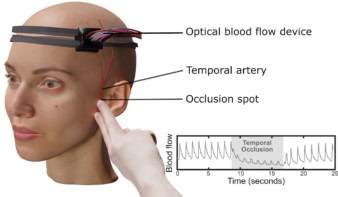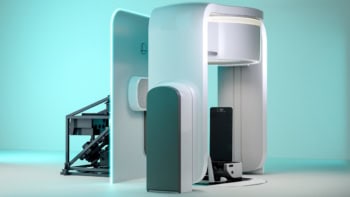Scientists from the Argonne National Laboratory in the US have developed a new type of magnetic sensor that can detect biomolecules. The device relies on measuring the Brownian relaxation of magnetic nanoparticles when they are bound to target biomolecules. The technique could have applications in medicine and the detection of bacteria and viruses in the environment (S-H Chung et al. 2004 Appl. Phys. Lett. 85 2971).

Seok-Hwan Chung and co-workers measure the change in the magnetic susceptibility of the nanoparticles in an alternating magnetic field. The susceptibility depends on the length of time it takes for the magnetic spins of the nanoparticles to “relax” to their original alignment after the magnetic field is removed.
There are two types of magnetic relaxation: in Brownian relaxation the particles rotate in solution due to their thermal energy, while in Néel relaxation the internal dipole moments of the particles rotate. Néel relaxation generally occurs for particles smaller than about 10 nanometres across, while Brownian relaxation dominates for larger particles. Sensing techniques that measure Néel relaxation times already exist, but they are not able to distinguish between different targets with similar properties.
Brownian relaxation shows up as a peak when magnetic susceptibility is plotted as a function of frequency. According to theory, this peak should move to lower frequencies if the radius of the nanoparticles is increased by, for example, binding target molecules to them.
To test this, Chung and colleagues coated magnetite (Fe3O4) nanoparticles with a protein called avidin. The magnetite core was between 10 and 40 nanometres across, while the coating was about 30 nanometres thick. They found a peak in the magnetic susceptibility versus frequency curve at 210 Hz, which shifted to just 120 Hz when biotin — a protein that specifically interacts with avidin — was added (see figure).
According to the Argonne team, this shift is caused by the increase of 10 nanometres or so in the hydrodynamic radius of nanoparticles caused by the biotin binding to the avidin coating. The method can thus be used to detect different target molecules because each leads to a characteristic decrease in the frequency of the peak. The work will lead to the development of small, portable biosensors, says Chung. The group is now working to improve the sensitivity of its technique.



